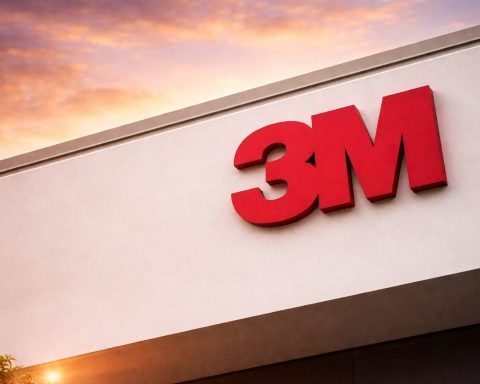- Current Stock Price: Ford (NYSE: F) shares were about $11.9 at the Oct. 17 close [1]. The stock spiked earlier in 2025 to near $12 but fell ~6–7% on Oct. 7 after news of a major supplier fire [2] [3]. Year-to-date the stock is still up roughly 20–25%, largely on strong truck sales earlier in the year [4] [5].
- Supplier Fire Impact: A Sept. 16 blaze at Novelis’s aluminum plant (Oswego, NY) – a key F-150 supplier – is expected to idle the factory into Q1 2026. Evercore analysts estimate the fire could shave $0.5–$1.0 billion off Ford’s 2025 profit [6] [7]. Ford’s stock “fell about 6%” immediately after the fire news [8].
- Massive Recalls: On Oct. 17 Ford announced a recall of ~625,000 U.S. vehicles to fix seatbelt and rear-view camera defects [9]. In total, Ford had issued 109 safety recalls in 2025 (over three times any rival), on track to be its worst year ever [10]. Regulators even fined Ford $165 million this year for slow recall execution [11].
- EV Business in Red: Ford’s Model e unit lost roughly $1.3 billion in Q2 2025 (about ~$22,000 burned per EV sold) [12]. U.S. EV sales plunged 31% YoY in Q2 2025, and Ford’s EV market share is only ~5% (a distant #3 behind Tesla and GM) [13]. The company has begun trimming EV plans – cutting ~1,000 jobs at its Cologne, Germany plant and delaying new EV lines [14] – and is relying on price cuts/discounts on models like the F-150 Lightning, which has been slower to ramp up than hoped [15].
- Core Truck Strength: In contrast, gas-powered pickups and SUVs remain Ford’s lifeline. Third-quarter U.S. vehicle sales jumped 8.2% to 545,522 units (driven by F-Series trucks, Broncos and Mavericks) [16]. Robust demand for these models generates strong cash flow [17] and supports Ford’s generous dividend (recently yielding ~5–6%) [18]. This core profit engine funds R&D and cushions Ford’s financials.
- Labor & Policy: Ford secured a 4-year UAW contract in late 2023, avoiding recent strikes [19], and hired Boeing veteran Mike Fitzsimmons in Sept. as VP of Global Labor [20] to bolster labor relations. In trade policy, the (new) U.S. administration on Oct. 17 enacted a 3.75% credit for U.S.-built autos/engines (through 2030) while imposing a 25% tariff on imported heavy trucks from Nov. 1 [21]. This mix favors domestic production (helping Ford’s U.S. plants) but could raise costs on vehicles or parts made abroad [22].
- Analyst Consensus: Wall Street is mostly cautious. Of ~17 analysts, 13 rate F “Hold” and only a couple are bullish [23]. The average 12-month price target is roughly $11–$11.5 – slightly below the current share price – implying limited near-term upside [24] [25]. For example, MarketBeat cites a consensus target around $11.04 [26], and TipRanks shows a mean target of $11.32 [27]. The high/low range of targets spans about $15.50 down to $7.00 [28] [29]. Overall, analysts say Ford’s valuation is undemanding (~15× earnings [30]) given its legacy assets (brands, fleet, financing arm) [31], but they note the company must prove its EV strategy and quality fixes to justify higher forecasts.
Stock Performance in Recent Days
Ford’s shares have been on a roller-coaster. After rallying near 52-week highs (around $12.00+ in late summer), the stock tumbled in early October on a cascade of bad news. As of the Oct. 17 close, Ford stock was about $11.92 [32]. Analysts note the stock remains roughly 20–30% higher YTD [33], but volatility spiked after the aluminum-plant fire on Oct. 6 and the recall announcements. Trading volume has been unusually high (averaging >50 million shares/day in mid-Oct) [34], reflecting frantic buy/sell activity.
Despite the swings, Ford looks “relatively cheap,” with a trailing P/E under 15 – below the auto-industry average [35]. Most brokerage firms carry a “Hold” rating. For instance, UBS just set a 12-month target of $12.50 (only ~5% above current levels) [36], and Jefferies recently raised its target to $12 after upgrading its view [37]. (By contrast, Goldman Sachs earlier in 2025 trimmed its Ford target to $9 amid tariff and warranty pressures [38].) In short, few analysts see a quick upside – Wall Street consensus is flat-to-down without clear new catalysts [39] [40].
Supplier Fire and Recall Impact
In mid-September, Ford was blindsided by a major supplier fire. A late-night blaze on Sept. 16 at Novelis’s Oswego, NY aluminum plant (Ford’s primary F-150 sheet supplier) is expected to idle operations until early 2026 [41]. Evercore ISI warned the hit could reach $0.5–$1 billion in 2025 earnings [42] [43]. Ford confirmed it is working closely with Novelis to find alternatives, but even so the stock “fell about 6%” on Oct. 7 as investors priced in the disruption [44] [45]. This fire compounds a supply-chain squeeze at a time of higher metals costs and staffing pressures.
The fire news coincided with a surge in safety recalls. On Oct. 17, Ford announced a recall of ~625,000 U.S. vehicles over seatbelt and rear-view camera display defects [46]. That included a massive Mustang seatbelt replacement and software fixes for Super Duty trucks. TechStock² notes 2025 will likely be Ford’s worst-ever recall year: 109 recalls in the U.S. so far, more than triple any rival [47]. Regulators have even slapped Ford with a $165 million penalty for slow recall execution [48]. CEO Jim Farley has acknowledged these quality issues publicly, calling defect reduction a “multi-year” top priority [49].
EV Challenges and Core Truck Strength
Ford’s electric-vehicle plans have cooled off dramatically. The Model e division lost about $1.3 billion in Q2 2025 [50], roughly $22,000 per EV sold. U.S. EV sales fell 31% year-over-year in Q2 [51] (partly due to the end of the federal $7,500 tax credit on Sept. 30). Ford’s EV share is only ~5.3% [52], and the company has responded by curbing investment. It plans to cut roughly 1,000 jobs at its Cologne EV plant and has delayed new EV assembly lines [53]. Even the F-150 Lightning has been discounted and produced more slowly than expected [54]. Without a rebound in demand (or new incentives), analysts worry Ford’s EV business will remain a drag into 2026.
On the bright side, Ford’s traditional gasoline-powered trucks and SUVs continue to sell briskly. In Q3, U.S. sales of F-Series pickups, Broncos and Mavericks jumped 8.2% to ~545,500 units [55]. Ford even boosted production of its hottest models to keep up with demand [56]. That franchise generates ample cash flow, which is funding Ford’s dividend (yield ~5–6%) [57] and EV investments. In Q3, Ford’s gas-engine divisions delivered roughly $3.4 billion EBIT [58], helping to absorb losses elsewhere. In sum, Ford’s legacy truck business remains solid – a critical offset to the EV woes.
Earnings Outlook
Ford will report its Q3 2025 results on Oct. 23 (after markets close). Analysts expect roughly $0.38 EPS on ~$43.1 billion revenue [59], essentially flat to last year’s Q3 ($0.37) [60] [61]. (In Q2, Ford beat estimates with $0.37 EPS on $50.18B sales [62].) Ford is guiding to about $6.5–$7.5 billion operating income in 2025 [63], down from earlier plans. The company says it is targeting roughly $1.00 EPS in 2025 and $2.00 in 2026 [64], but those outlooks assume recovery in both the EV and global auto markets.
Aside from the fire and recalls, Ford’s executives are watching costs closely. Higher steel/aluminum prices and tariffs have pressured margins; any easing would help. The recent US auto policy (tax credit/ tariffs) is expected to boost domestic vehicle profitability on one hand, but could raise costs on imported parts [65]. Conversely, higher interest rates could dampen consumer demand for all vehicles (EVs and ICE) [66]. Overall, Wall Street notes that Ford’s balance sheet and cash flow generation remain relatively healthy, but the stock will hinge on the near-term surprises (up or down) around these headwinds [67] [68].
Labor and Policy Context
Unlike last year’s Detroit strikes, Ford’s labor situation is calm. A new four-year UAW contract (negotiated in late 2023) has secured work peace through 2027 [69]. To reinforce that, Ford hired Mike Fitzsimmons (ex-Boeing contract negotiator) in Sept. to head global labor relations [70]. This gives Ford some breathing room as it retools plants for EV production. The next UAW contract isn’t due until 2028, reducing short-term strike risk [71].
On the policy front, the U.S. is rolling out incentives for domestic auto production. The Oct. 17 order (by President Trump in this timeline) grants a 3.75% credit on U.S.-assembled cars and engines through 2030 [72] [73]. This effectively makes Ford’s Michigan-made vehicles more profitable. At the same time, a new 25% tariff on imported medium/heavy trucks (from Nov. 1) was announced [74] [75]. Since Ford builds most of its heavy trucks (like the F-250/350) domestically but imports some components, the net effect is mixed: it generally protects Ford’s high-volume U.S. production, but could increase costs on any models or parts sourced abroad. In all, experts say these policy moves introduce more complexity – slightly favoring Ford’s domestic output but adding uncertainty on costs [76] [77].
Analyst Commentary and Forecast
Wall Street’s view of Ford is split but cautious. Analysts point out Ford’s “undemanding” valuation (~15× earnings [78]) and its dominant position in trucks. Bulls highlight Ford’s strong brands, balance sheet, cash flow and generous dividends. Bears counter that EV losses, quality problems and new tariffs could erode profits. Indeed, Ford’s consensus rating is “Hold” [79]. For example, Jefferies upgraded Ford to Hold on Oct. 6 and raised its 12-month price target to $12 [80], citing potential upside if the EV cycle recovers. By contrast, Goldman Sachs (in April 2025) cut its target to $9, pointing to tariff and warranty pressures [81]. Retail brokerage data (Public.com) shows roughly 70% of analysts at Hold vs. 8% at Buy and 15% at Sell [82].
The average forecast reflects skepticism: MarketBeat reports a consensus 12-month target around $11.0 (about a 7% downside) [83], and TipRanks shows a mean target of $11.32 (~5% below current) [84]. In other words, most analysts see only limited upside unless Ford can deliver on EV improvements and cost controls.
Looking ahead, analysts say clear near-term catalysts are scarce. If Ford beats Q3 estimates or reports meaningful cost cuts (especially in EV), the stock could get a short-lived rally. But any new negative surprise (another big recall, a supply hit, or slowing truck demand) would likely send shares lower. Longer-term (2026+), Ford’s fate hinges on the EV turnaround and broader economy. Some forecasters remain mildly optimistic: for instance, 247WallSt recently noted Ford’s “expected earnings power” and shareholder-friendly buybacks as positives [85]. Others argue we should remain cautious “until Ford proves it can execute flawlessly and compete effectively in the EV era” [86].
Sources: Data and analysis are drawn from Ford’s filings and quotes, Reuters and MarketBeat reports, and recent TechStock² (ts2.tech) news articles [87] [88] [89] [90] [91]. All information is current as of Oct. 19, 2025.
References
1. ts2.tech, 2. www.reuters.com, 3. ts2.tech, 4. ts2.tech, 5. ts2.tech, 6. www.reuters.com, 7. ts2.tech, 8. www.reuters.com, 9. www.reuters.com, 10. ts2.tech, 11. ts2.tech, 12. ts2.tech, 13. ts2.tech, 14. ts2.tech, 15. ts2.tech, 16. ts2.tech, 17. ts2.tech, 18. ts2.tech, 19. ts2.tech, 20. ts2.tech, 21. ts2.tech, 22. ts2.tech, 23. ts2.tech, 24. www.marketbeat.com, 25. www.tipranks.com, 26. www.marketbeat.com, 27. www.tipranks.com, 28. www.marketbeat.com, 29. www.tipranks.com, 30. ts2.tech, 31. ts2.tech, 32. ts2.tech, 33. ts2.tech, 34. ts2.tech, 35. ts2.tech, 36. ts2.tech, 37. ts2.tech, 38. ts2.tech, 39. ts2.tech, 40. ts2.tech, 41. www.reuters.com, 42. www.reuters.com, 43. ts2.tech, 44. www.reuters.com, 45. ts2.tech, 46. www.reuters.com, 47. ts2.tech, 48. ts2.tech, 49. ts2.tech, 50. ts2.tech, 51. ts2.tech, 52. ts2.tech, 53. ts2.tech, 54. ts2.tech, 55. ts2.tech, 56. ts2.tech, 57. ts2.tech, 58. ts2.tech, 59. ts2.tech, 60. ts2.tech, 61. ts2.tech, 62. ts2.tech, 63. ts2.tech, 64. ts2.tech, 65. ts2.tech, 66. ts2.tech, 67. ts2.tech, 68. ts2.tech, 69. ts2.tech, 70. ts2.tech, 71. ts2.tech, 72. ts2.tech, 73. ts2.tech, 74. ts2.tech, 75. ts2.tech, 76. ts2.tech, 77. ts2.tech, 78. ts2.tech, 79. ts2.tech, 80. ts2.tech, 81. ts2.tech, 82. ts2.tech, 83. www.marketbeat.com, 84. www.tipranks.com, 85. ts2.tech, 86. ts2.tech, 87. www.reuters.com, 88. www.reuters.com, 89. ts2.tech, 90. ts2.tech, 91. ts2.tech







